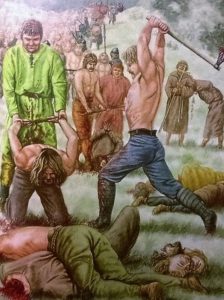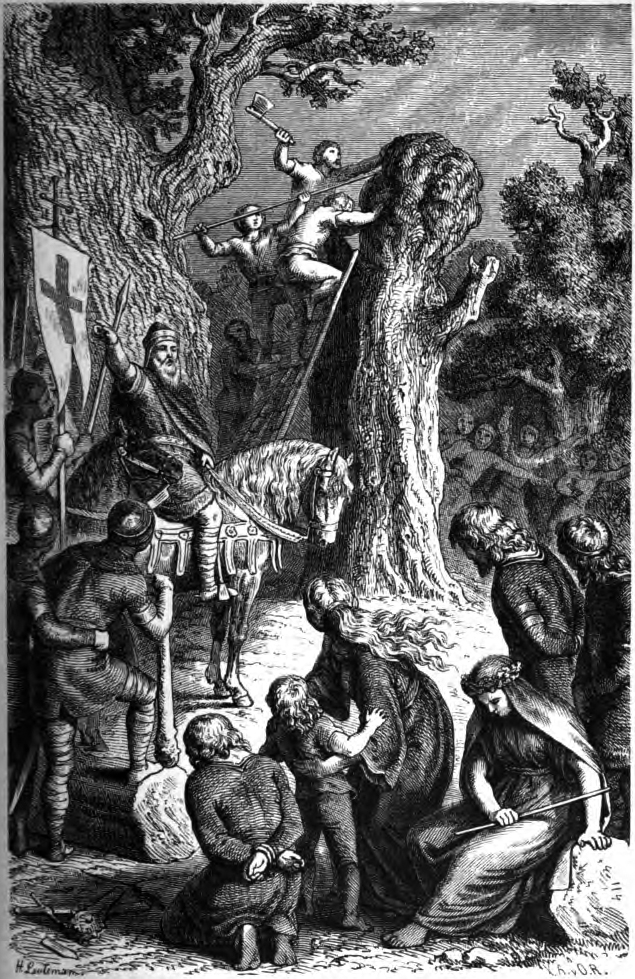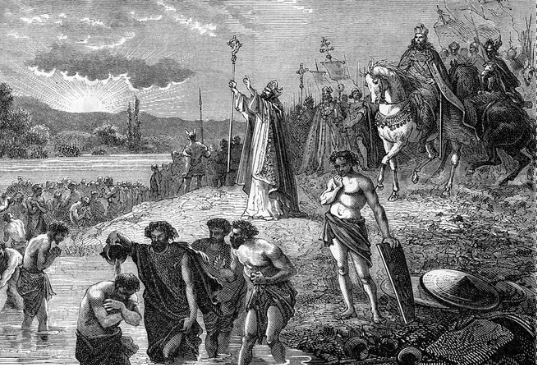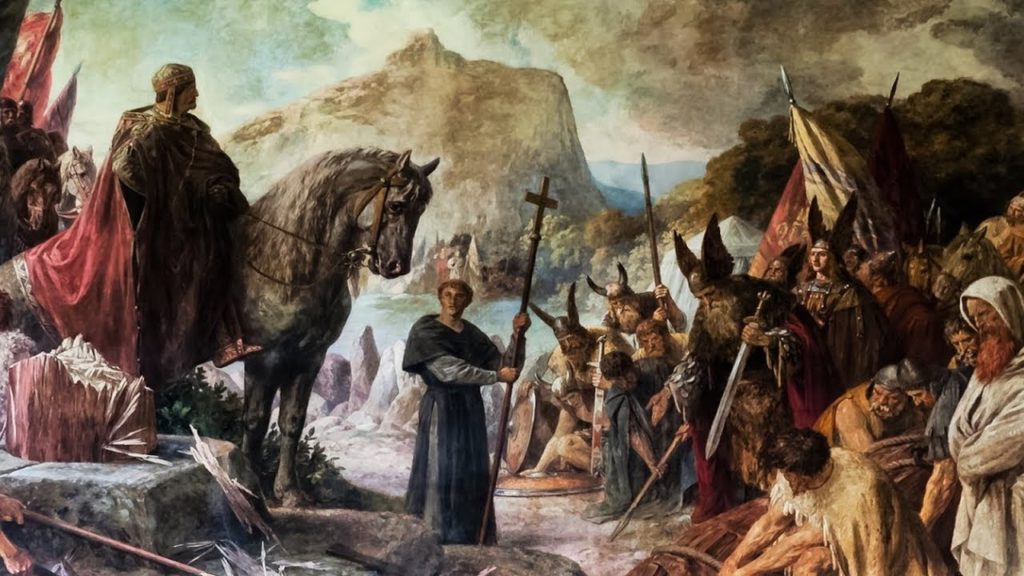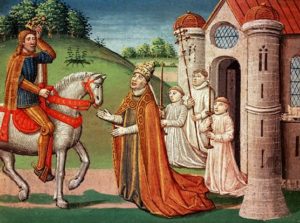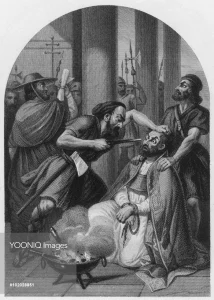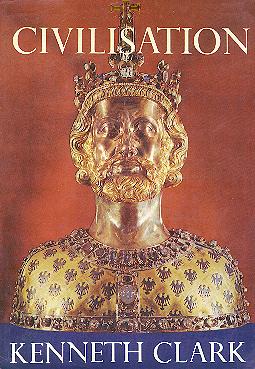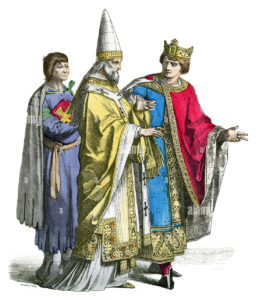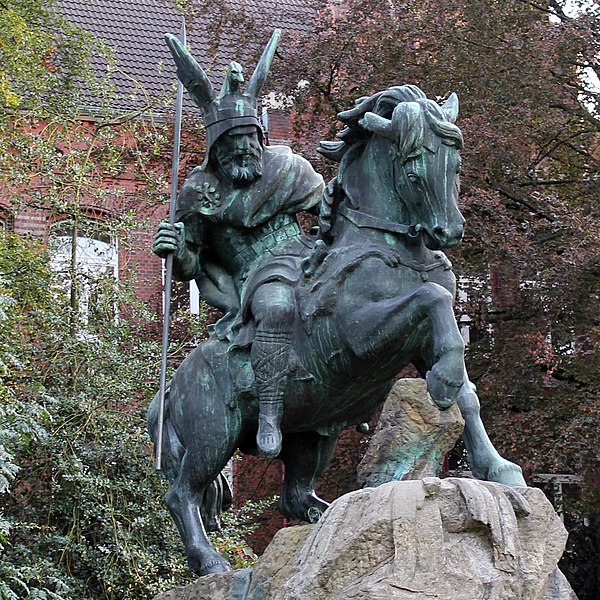
Editor’s note: Above, Widukind, the leader of the Saxons from 777 to 785 and worshiper of Aryan Gods, during the Saxon Wars. Alas, Charlemagne, a worshiper of the god of the Jews, ultimately prevailed. For the context of these translations click here.
______ 卐 ______
The resistance of ‘the most heathen’ against Christianity and Frankish sovereignty didn’t disappear, but rather grew stronger. Rebellion broke out again throughout the country. Again Widukind appeared at the front, dragging the Frisians into his uprising. And again all offered sacrifices to the Gods between the Lawers and the Fli. All that was Frankish and Christian was persecuted, rejected and eliminated.
Charles rushed to Saxony, leaving the still-fresh grave of his young second wife, the blessed Hildegard, who died on 30 April 783 in Diedenhofen. Her disappearance must certainly have affected him, unlike the death of the 4,500 Saxons (yet that same year she gave him a successor, who was once again almost a female child). And through Saxony, he advanced again with much bloodshed and ‘with the help of God’.
With God’s help the Franks were victorious, and a very great number of Saxons fell there so that only a few were saved by flight. And from there the most glorious king arrived victorious in Paderborn. And there he assembled his army. And he continued his march to the Haase when the Saxons rejoined. There another battle was fought, and not a few of the Saxons fell, and the Franks were victorious with the help of God.
Those royal Annals, which we have just quoted, about the year 783, refer to the only two great pitched battles of the whole war, near the present Detmold and on the Haase, in the very heart of the Weser fortress. Only ‘a few of the great multitude escaped’, the chroniclers say of the Saxon defeat at Detmold, and ‘many thousands’ were killed. And according to another ancient source, also at the Haase an ‘innumerable multitude of Saxons’ covered the battlefield, ‘again many thousands more than before’. Again Charles won ‘with divine help’, returned among the Franks and ‘celebrated Christmas’ And in the meantime also many thousands were reduced to slavery.
In the following year (784) the monarch devastated Saxony, especially Ostrophalia, while his son, following in his footsteps, devastated Westphalia, again with God’s help, of course. ‘With God’s help Charles, the son of the great King Charles, was victorious with the Franks after many Saxons had died. By divine design, he returned unscathed to his father in the city of Worms’.
The winter of 784-785 was spent by Charles with the very young Fastrada, whom he had married the previous year, with her sons and daughters in Eresburg. And only then did the resistance of the Saxons gradually collapse. And while he was celebrating the resurrection of the Lord, he again sent out a soldiery, and he undertook ‘a campaign’ of devastation, plundering and clearing roads, setting fire to whole forests, destroying crops, blinding springs, murdering peasants, taking fortresses and fortified towns ‘for an order is an essential condition for their work’ (Daniel-Rops).
In 785 the Saxon people, so severely punished, seemed to have almost exhausted their capacity for resistance, and seemed, at last, to have submitted ‘to the soft and light yoke of Christ’, as the biographer of Abbot Sturmi, that fanatical missionary of the Saxons—who preached the fight against the pagans and demanded the destruction of the temples of their Gods and the cutting down of their ancient sacred forests to build churches on them—had long wished.
Charles had communicated his victory to the pope, who had sent him his congratulations, and at the end of June 786, he ordered a triduum of thanksgiving to all Christianity in the West, even beyond the seas, wherever there were Christians.
